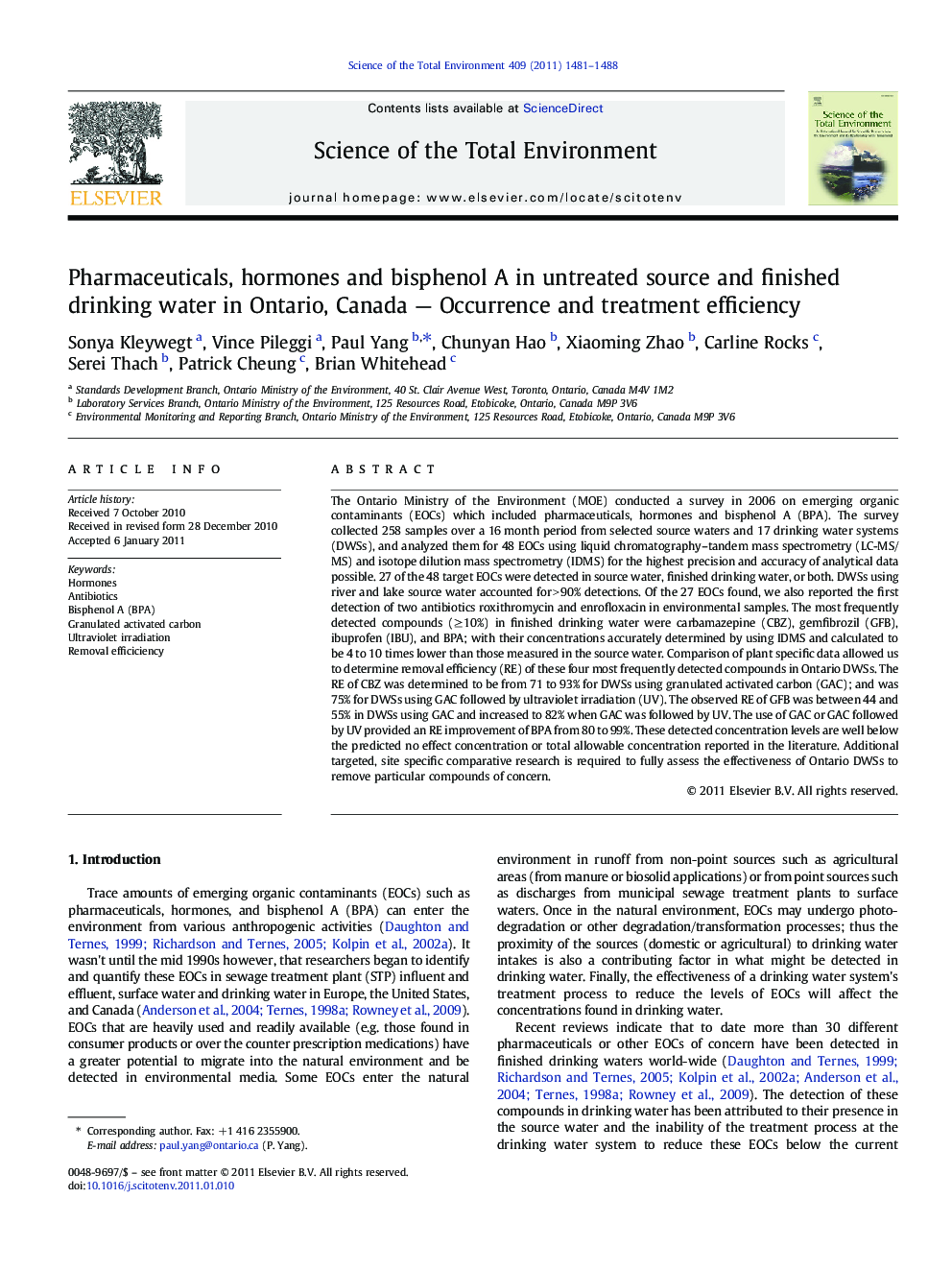| Article ID | Journal | Published Year | Pages | File Type |
|---|---|---|---|---|
| 4430858 | Science of The Total Environment | 2011 | 8 Pages |
The Ontario Ministry of the Environment (MOE) conducted a survey in 2006 on emerging organic contaminants (EOCs) which included pharmaceuticals, hormones and bisphenol A (BPA). The survey collected 258 samples over a 16 month period from selected source waters and 17 drinking water systems (DWSs), and analyzed them for 48 EOCs using liquid chromatography–tandem mass spectrometry (LC-MS/MS) and isotope dilution mass spectrometry (IDMS) for the highest precision and accuracy of analytical data possible. 27 of the 48 target EOCs were detected in source water, finished drinking water, or both. DWSs using river and lake source water accounted for > 90% detections. Of the 27 EOCs found, we also reported the first detection of two antibiotics roxithromycin and enrofloxacin in environmental samples. The most frequently detected compounds (≥ 10%) in finished drinking water were carbamazepine (CBZ), gemfibrozil (GFB), ibuprofen (IBU), and BPA; with their concentrations accurately determined by using IDMS and calculated to be 4 to 10 times lower than those measured in the source water. Comparison of plant specific data allowed us to determine removal efficiency (RE) of these four most frequently detected compounds in Ontario DWSs. The RE of CBZ was determined to be from 71 to 93% for DWSs using granulated activated carbon (GAC); and was 75% for DWSs using GAC followed by ultraviolet irradiation (UV). The observed RE of GFB was between 44 and 55% in DWSs using GAC and increased to 82% when GAC was followed by UV. The use of GAC or GAC followed by UV provided an RE improvement of BPA from 80 to 99%. These detected concentration levels are well below the predicted no effect concentration or total allowable concentration reported in the literature. Additional targeted, site specific comparative research is required to fully assess the effectiveness of Ontario DWSs to remove particular compounds of concern.
Research Highlights► Occurrence and typical range of 45 selected pharmaceuticals and hormones and bisphenol A in aquatic environment of Ontario, Canada were determined in a 16-month survey. ► IDMS analysis ensured monitoring data are with high precision and accuracy. ► Reported the first detection of two antibiotics roxithromycin and enrofloxacin in aquatic environmental samples. ► Compared removal efficiency of carbamazepine, gemfibrozil, ibuprofen, and BPA in DWSs using granulated activated carbon and ultraviolet treatment processes.
